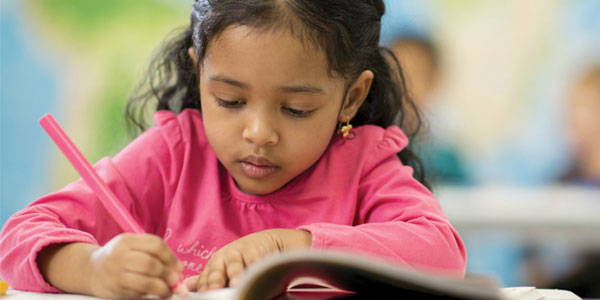
Commentary by Katherine Diaz
The findings of a September 2017 study by the National Research Center on Hispanic Children & Families should give the Hispanic community cause for concern.
Focused on the development and home environments of low-income Hispanic children in grades K-3, the study is noteworthy for several reasons. For starters, it revealed that 5.7 million Hispanic children live in poverty. That’s a third of all U.S. Hispanic children.
By comparing Hispanic children’s academic performance and household structures to that of their white and black peers, researchers Christina M. Padilla, Natasha Cabrera and Jerry West made some other significant findings. They learned that Hispanic children consistently underperform in their reading skills during grades K-3, compared to their white peers. In math, the findings were similar. On the other hand, Hispanic children outperformed their black peers in math by the second grade.
Another significant finding was that low-income parents of Hispanic children were found to be “less likely to engage in daily cognitively stimulating activities.” Only 39 percent of the low-income Hispanic parents who were studied said they engage and teach their children daily – and only 54 percent do so between three and six times a week. By comparison, white and black parents engage more each day with their children.
Overall, the study determined that low-income Hispanic children perform below their white peers and compare “similar to or better than their black peers.”
As the 2017 study mentioned, grades K-3 form “a critical period in children’s development and academic learning.” The Hispanic community must do more in 2018 and beyond to ensure that Hispanic children in those grades get the help they need to grow mentally, emotionally and physically – especially if those children are among the 5.7 million Hispanic children living in poverty. If not, the data of future research studies will only become more alarming.
El rendimiento académico de los niños hispanos de bajos ingresos es motivo de preocupación
Los hallazgos de un estudio realizado en septiembre de 2017 por el Centro Nacional de Investigación sobre Niños y Familias Hispanos deberían preocupar a la comunidad hispana.
Centrado en el desarrollo y el ambiente hogareño de niños hispanos de bajos ingresos en preescolar, el estudio es notable por varias razones. Para empezar, reveló que 5.7 millones de niños hispanos viven en la pobreza. Esa es la tercera parte de todos los niños hispanos de EE. UU.
Al comparar el rendimiento académico y las estructuras hogareñas de los niños hispanos con el de sus compañeros blancos y negros, los investigadores Christina M. Padilla, Natasha Cabrera y Jerry West hicieron otros hallazgos significativos. Aprendieron que los niños hispanos tienen un peor rendimiento en sus habilidades de lectura durante los grados de preescolar, en comparación con sus compañeros blancos. En matemáticas, los hallazgos fueron similares. Por otro lado, los niños hispanos superaron a sus compañeros negros en matemáticas en el segundo grado.
Otro hallazgo significativo fue que los padres de bajos ingresos de niños hispanos tenían “menos probabilidades de participar en actividades diarias que fueran estimulantes cognitivamente”. Sólo el 39 por ciento de los padres hispanos de bajos ingresos y que estudiaron dijeron que se involucran y enseñan a sus hijos diariamente, y solo el 54 por ciento lo hace entre tres y seis veces a la semana. En comparación, los padres blancos y negros se involucran más cada día con sus hijos.
En general, el estudio determinó que los niños hispanos de bajos ingresos se desempeñan por debajo de sus compañeros blancos y comparan “similares o mejores resultados que sus compañeros negros”.
Como se menciona en el estudio del 2017, los grados de preescolar forman “un período crítico en el desarrollo y el aprendizaje académico de los niños”. La comunidad hispana debe hacer más en el 2018 y más allá para garantizar que los niños hispanos de esos grados obtengan la ayuda que necesitan para crecer emocional, mentalmente y físicamente, especialmente si esos niños se encuentran entre los 5.7 millones de niños hispanos que viven en la pobreza. De lo contrario, los datos de estudios de investigación futuros sólo se volverán más alarmantes.










